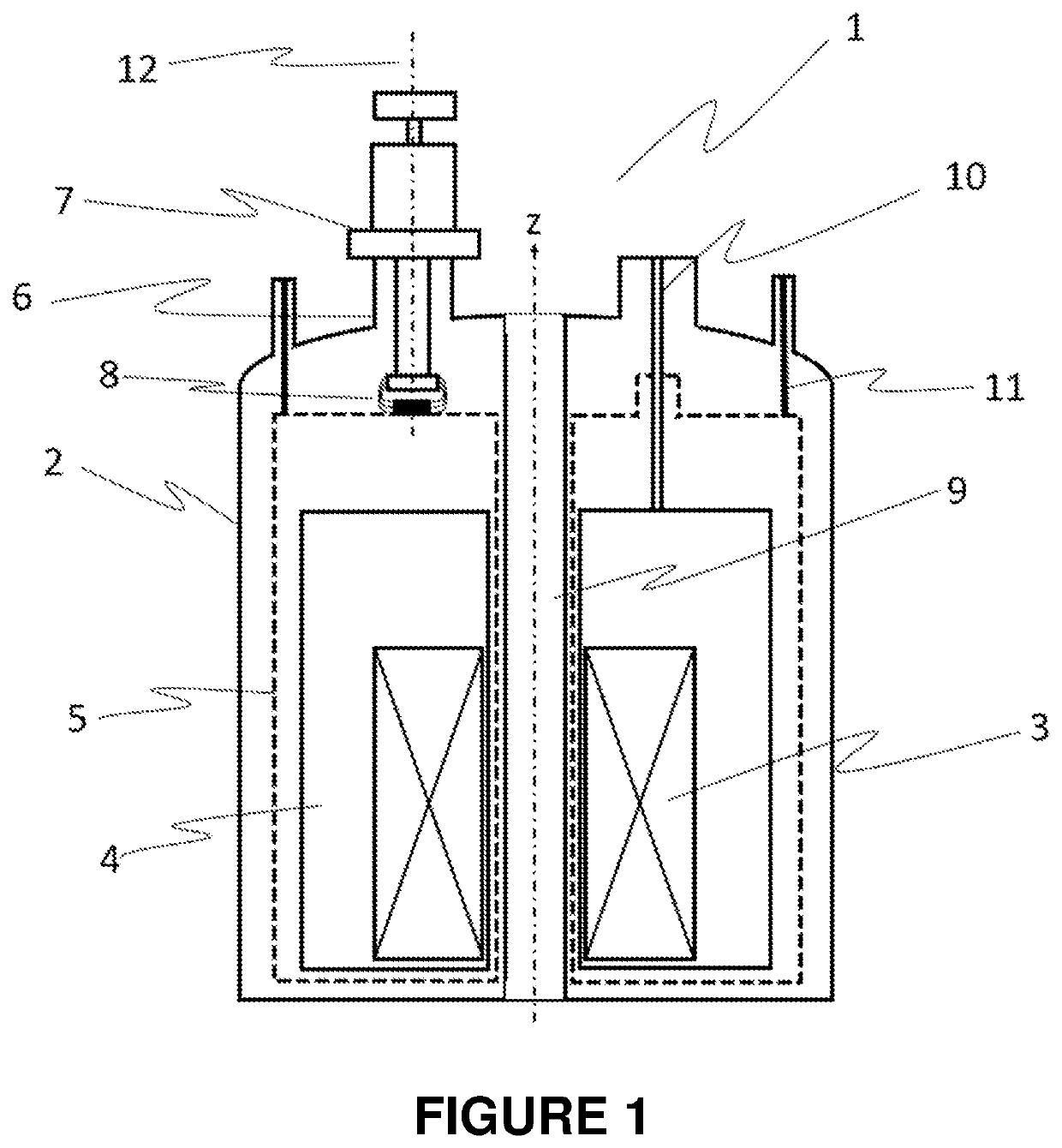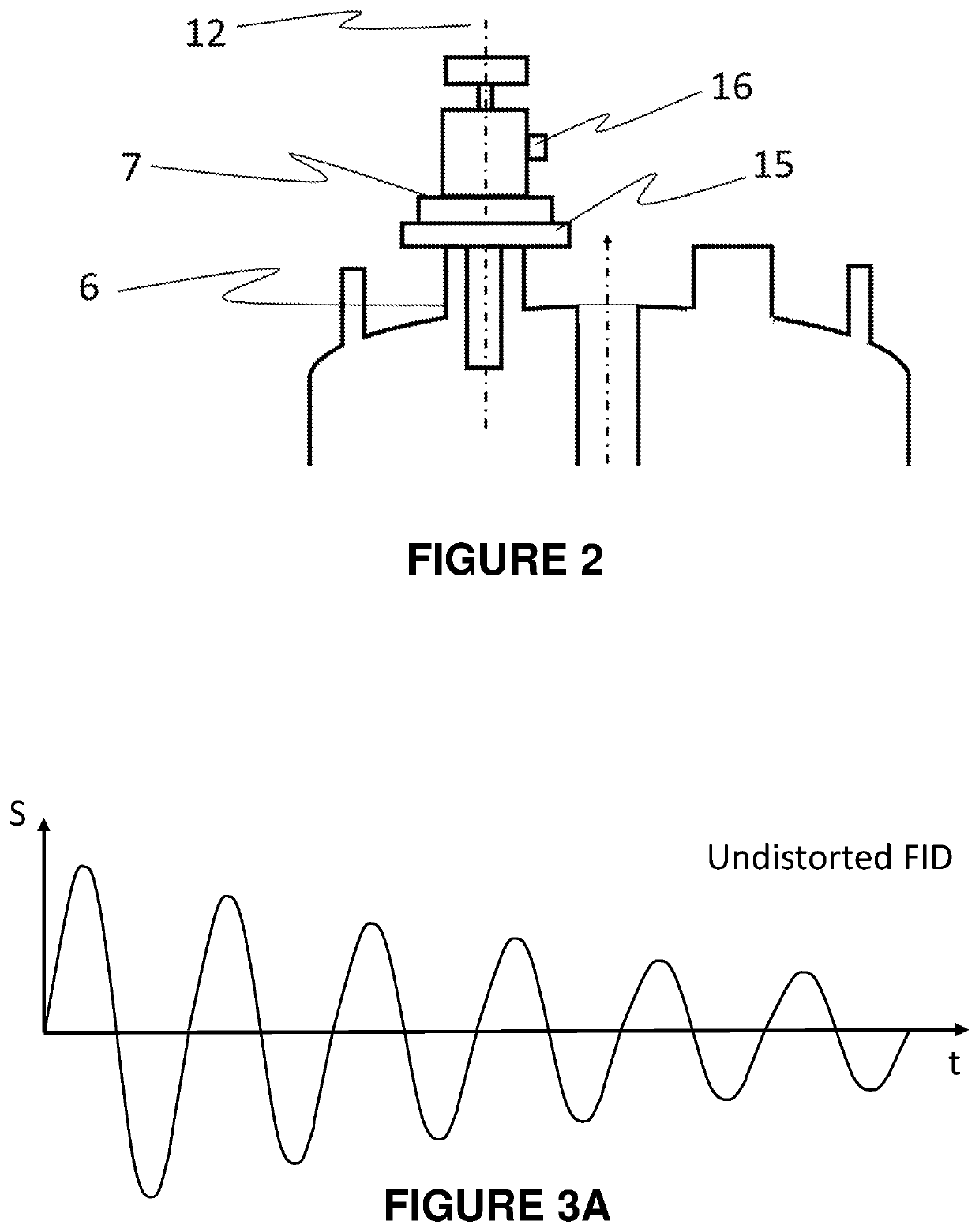Nmr magnet system with stirling cooler
a technology of magnet system and cooler, which is applied in the field of nmr magnet system, can solve the problems of increasing the overall cost of operation, the inability of the nmr magnet system to operate, and the increase in the cost of helium required for cooling the magnet to temperatures suitable for superconductivity, so as to achieve the effect of minimal effect on nmr measurements and low overall cost of ownership
- Summary
- Abstract
- Description
- Claims
- Application Information
AI Technical Summary
Benefits of technology
Problems solved by technology
Method used
Image
Examples
Embodiment Construction
[0022]FIG. 1 shows an NMR magnet system 1 with a Stirling cooler 7. The NMR magnet system comprises a housing 2, and a magnet coil 3 in a helium vessel 4. The helium vessel is surrounded by a cold shield 5, which is fixed to the housing by holding rods 11. The helium vessel is connected to holding tube 10, which may be one of several holding tubes, and which provides a passage through which helium gas within the helium vessel 4 may pass to an external collection chamber (not shown). Holding tubes 10 are also used for connecting magnet coil 3 to an external power supply for charging the magnet, and for refilling helium in the helium vessel 4. Furthermore, they provide structural support for the helium vessel 4, helping to hold it in place relative to the housing 2. The Stirling cooler 7 is attached to a neck tube 6 of the NMR magnet system. Thermal contact between the cold shield 5 and the neck tube 6 is provided by thermal coupling 8, which also provides mechanical isolation of the ...
PUM
 Login to View More
Login to View More Abstract
Description
Claims
Application Information
 Login to View More
Login to View More - R&D
- Intellectual Property
- Life Sciences
- Materials
- Tech Scout
- Unparalleled Data Quality
- Higher Quality Content
- 60% Fewer Hallucinations
Browse by: Latest US Patents, China's latest patents, Technical Efficacy Thesaurus, Application Domain, Technology Topic, Popular Technical Reports.
© 2025 PatSnap. All rights reserved.Legal|Privacy policy|Modern Slavery Act Transparency Statement|Sitemap|About US| Contact US: help@patsnap.com



